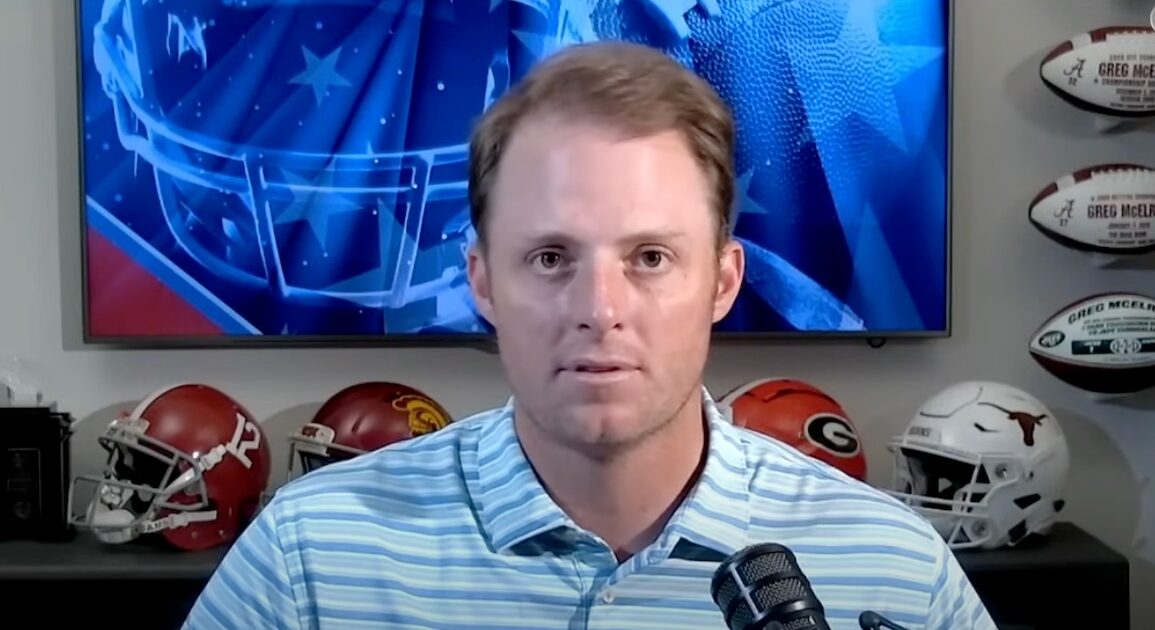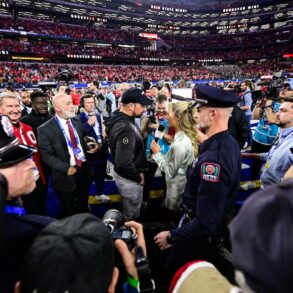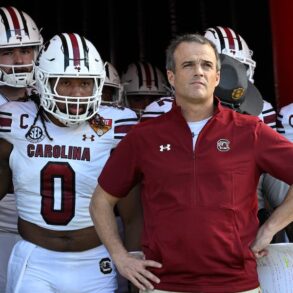
The House settlement was passed and with it the rules for new roster limits in college athletics were approved. But what do the new limits mean practically?
ESPN analyst Greg McElroy spent some time on his Always College Football podcast breaking down the implication of the new rules. He came away with some positives and negatives from the new changes.
“The positives that come from roster limitations is that it increases the scholarship opportunities that you might find in other places,” McElroy said. “For instance in football, in time, not immediately, but in time, there might be 105 scholarships available, whereas in the past it was just 85. We’re not there right now, but maybe here two, three, four years down the road that could be a real positive. And I think people are excited about that possibility.”
Many programs have budgeted for more scholarships being available across the entirety of the athletic department than before. That’s because the roster limits in some sports have changed from the old scholarship limits.
McElroy pointed out one sport that should benefit massively from the changes. That’s baseball.
“Then if you care about the other sports, ala college baseball, which is in the midst of their College World Series pursuit right now … they now will go from 11.7 scholarships to potentially 20, 25, 30, 35, 40, whatever it ends up being,” McElroy said. “So that’s all really beneficial.”
Another benefit? Easier financial planning.
“We’re also really happy in many ways that the compensation, there’s some clarity now surrounding compensation,” McElroy said. “Now it’s not directly tied to roster limits, but this new system as a whole provides clarity as to what rosters might cost in the future and it also provides a streamlined operation for these athletic departments.”
That said, one of the biggest hurdles around roster limits was that the initial focus only really applied to scholarship players and scholarships. It sort of ignored walk-ons, the impact of which can be large depending on the program.
“The big issue is that there would be many, many lost opportunities to players,” McElroy said. “I referenced the 128 to 105 just in football alone, well, people were having a real hard time with that. And players were writing in to the judge and saying, ‘Yeah, I’m not going to be able to play football as a result of this decision.’
“So they decided to implement a grandfather clause, which means players that are potentially at risk of losing their roster spot would receive a designation. It would be a designated student-athlete tag. And that student-athlete tag will be included throughout their entire careers. So these players, they won’t count against the cap. They can move freely. They can go play elsewhere, but they’re able to play and if they are the 106th player on a team in which roster limits are at 105, they won’t count against the cap. So that’s beneficial. That will obviously expire at some point here in the near future, but it is worth noting at least in the near term.”
Then what are the negatives of roster limits? For McElroy, it’s the potential disappearance of the walk-on caliber player.
“I’ve been one that has kind of been outspoken about roster limits. I can’t be in favor of them,” McElroy said. “I was on a team with 85 scholarship players, but we had 125, 126, 127, 128 guys that were on the roster. And those 42, 43 guys that weren’t on scholarship that practiced with us every day were vital to the college experience.
“I believe that the walk-on is as important as the starting quarterback. I’ve always felt that way, I think that’s the beauty of the team. That, yes, they might not receive financial aid but they were every bit a part of the team as anybody else that had a jersey, NIL compensation, all these other aspects. They might, in some cases, graduate with student debt, but they were part of the team.”
Walk-ons have a big impact on a college roster. They might not be out there on the field on Saturdays making plays, but they help put the guys that are in position to do so.
The occasionally, of course, someone will exceed expectations. The Rudy stories make college football.
“They are part of the development process and there are a million examples of stories in which guys went from walk-on, to scholarship, to star, to NFL, to crazy high levels of NFL,” McElroy said. “And the fear of that potentially going away was something that kind of kept me up at night if I’m going to be completely honest. But now your fears and concerns can be put at ease, at least in the near term. Because of that grandfather clause these guys will still have the opportunity to play. Might not be at the school that they initially intended to go, but they at least will have that opportunity to play the rest of their years.”
Bottom line: Change is coming to the sport with the implementation of roster limits. But, if handled correctly, the sport can still thrive at a high level.
“The walk-ons as we know if will not look exactly the same, but here’s hoping that there will be loopholes and opportunities for those guys to still play college football,” McElroy said. “And maybe with limitations elsewhere they can play at a different level and maybe get more opportunities at a different level.”
This post was originally published on this site be sure to check out more of their content.







